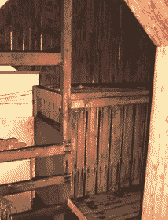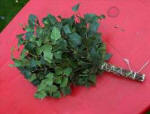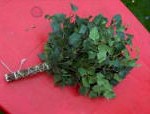Russian bath, Баню, bania, or banya

Russian baths enable bathers to sweat by means of steam or vapour, and they have been in use since well before medieval times. Like the Finns in their sauna, Russians use leafy bunches of birch or oak (venik) to stimulate the skin by various forms of stroking or whisking.


On his essential Russian baths website, Ruslan Sudentas explains the difference between Russian and other types of hot air baths as follows:
The hottest contemporary Finnish saunas have only about 5-10% humidity, which allow boiling temperatures (100C/212F) to be tolerated and even enjoyed for short periods of time. Other types of baths, such as the Turkish bath Hammam have almost 100% humidity, but the temperatures there are no more than 40C/100F … The Russian bath has the same levels of humidity as the air we breathe every day: about 60%. And the temperatures usually do not exceed 80C/180F.
Other pages of Ruslan's website deal with the history and use of the Russian bath, with a section on baths and health.
Most of the so-called 'Turkish baths' advertised today in hotels and spas are actually prefabricated plastic steam-heated rooms which are notionally derived from Russian baths—though usually, at least in the British Isles, without the venik.
Contrary to what might be inferred from a reading of this website, I am not averse to taking a Russian bath myself; I just want to emphasize the difference between Russian and Victorian Turkish baths.
